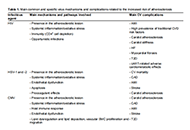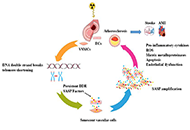4 results in Exploration of Cardiology
Latest
Sort by :
- Latest
- Most Viewed
- Most Downloaded
- Most Cited
Open Access
Review
Why and when should be lipoprotein(a) level measured?
Miłosz Broncel, Marlena Broncel
Published: December 29, 2023 Explor Cardiol. 2023;1:180–192
This article belongs to the special issue Common cardiovascular target for a wide gamut of contemporary health problems – thrombotic and arrhythmic sides of an inflammatory coin

Open Access
Review
Viral infections in cardiometabolic risk and disease between old acquaintances and new enemies
Cristina Vassalle
Published: December 27, 2023 Explor Cardiol. 2023;1:148–179
This article belongs to the special issue Environmental Cardiology

Open Access
Commentary
Low-doses ionizing radiation exposure: an emerging causal risk factor for cardiovascular disease
Maria Grazia Andreassi
Published: December 11, 2023 Explor Cardiol. 2023;1:141–147
This article belongs to the special issue Environmental Cardiology

Open Access
Review
Toxic metals in pregnancy and congenital heart defects. Insights and new perspectives for a technology-driven reduction in food sources
Francesca Gorini, Alessandro Tonacci
Published: November 13, 2023 Explor Cardiol. 2023;1:114–140
This article belongs to the special issue Environmental Cardiology

Journal Information